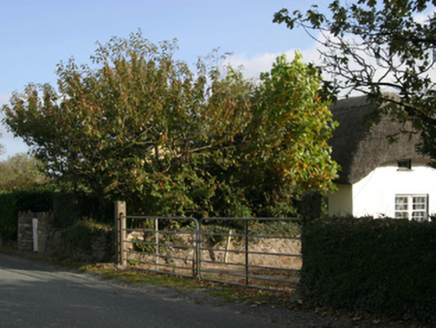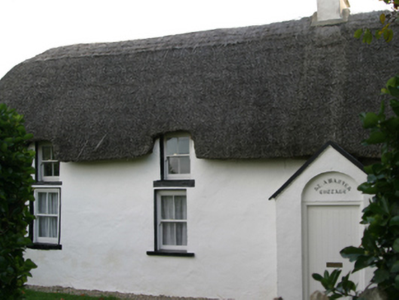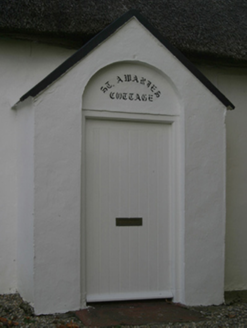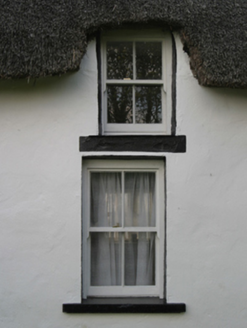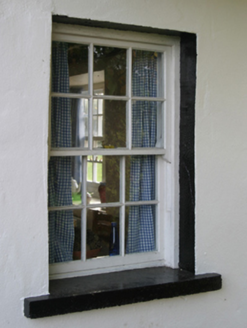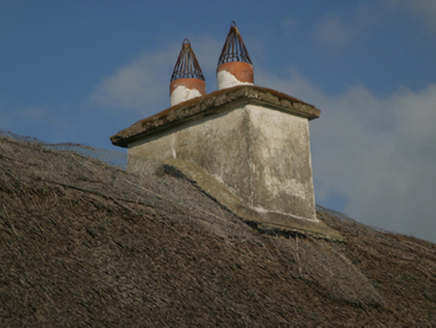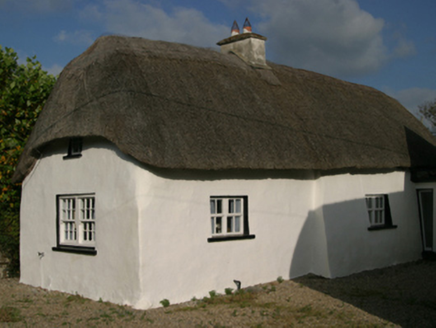Survey Data
Reg No
15705309
Rating
Regional
Categories of Special Interest
Architectural, Social
Original Use
Farm house
In Use As
Farm house
Date
1700 - 1840
Coordinates
311248, 107309
Date Recorded
24/10/2007
Date Updated
--/--/--
Description
Detached four-bay single-storey lobby entry thatched farmhouse with dormer attic, extant 1840, on a rectangular plan off-centred on single-bay single-storey gabled windbreak. Occupied, 1911. Renovated, 1993, to accommodate continued occasional use. Replacement hipped water reed thatch roof on strutted King post timber construction with chicken wire-covered exposed hazel lattice stretchers to degraded raised ridge having exposed scallops, cement rendered central chimney stack having moss-covered concrete capping supporting terracotta pots, and blind stretchers to eaves having blind scallops. Rendered battered walls with rendered battered buttress to rear (east) elevation. Square-headed off-central door opening in round- or segmental-headed recess with concealed dressings framing timber boarded door. Square-headed window openings with concrete sills (ground floor) or flush sills (dormer attic), and concealed dressings framing replacement two-over-two (north) or six-over-six (south) timber sash windows having part exposed sash boxes. Set back from line of road with cylindrical piers to perimeter having rubble stone soldier course capping supporting timber gate.
Appraisal
A farmhouse identified as an integral component of the vernacular heritage of south County Wexford by such attributes as the rectilinear lobby entry plan form off-centred on a characteristic windbreak; the construction in unrefined local materials displaying a battered silhouette with sections of "daub" or mud suggested not only by a stabilising buttress but also by an entry in the "House and Building Return" Form of the National Census (NA 1901; NA 1911); the somewhat disproportionate bias of solid to void in the massing; and the high pitched roof latterly showing a non-indigenous Turkish water reed thatch finish. Having been well maintained, the elementary form and massing survive intact together with substantial quantities of the original or sympathetically replicated fabric, both to the exterior and to the interior, thus upholding the character or integrity of a farmhouse making a picturesque visual statement in a rural street scene.
